Power Pitch
All About Diffusion
ISMRM & ISMRT Annual Meeting & Exhibition • 10-15 May 2025 • Honolulu, Hawai'i

| 15:45 |
 |
Screen Number: 1
0693. Motion
robust joint k-q reconstruction for accelerated multi-band
diffusion MRI

X. Ye, K. Miller, W. Wu
Wellcome Centre for Integrative Neuroimaging, FMRIB, Nuffield Department of Clinical Neurosciences, University of Oxford, Oxford, United Kingdom
Impact: The developed method addresses the primary
challenge in joint k-q reconstruction - subject motion,
enabling robust acceleration of dMRI. This advancement
facilitates translation of advanced dMRI methods to less
cooperative subjects, expanding accessibility and utility of
advanced dMRI in clinical setting.
|
| 15:47 |
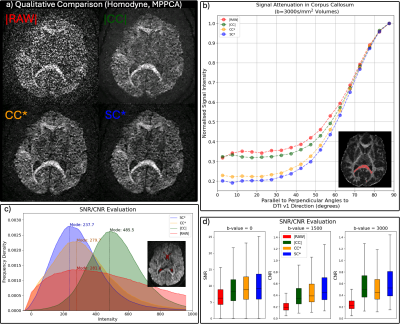 |
Screen Number: 2
0694. Single-Channel
and Channel-Combined Complex Denoising for Diffusion MRI

F. D'Antonio, S. Warrington, P. Morgan, S. Sotiropoulos
Sir Peter Mansfield Imaging Centre, University of Nottingham, Nottingham, United Kingdom
Impact: Improved denoising from single-channel complex
data highlights the importance of having access to data
early in reconstruction. Less susceptibility of denoising
performance to reconstruction choices, as observed for some
methods, is important to consider when harmonising dMRI
across scanners.
|
| 15:49 |
 |
Screen Number: 3
0695. Accelerated
Romer-EPTI using physics-driven, joint x-q attention-network
regularized reconstruction for fast mesoscale diffusion MRI
K. Tang, Z. Dong, L. Wald, F. Wang
Athinoula A. Martinos Center for Biomedical Imaging, Massachusetts General Hospital, Charlestown, United States
Impact:
The proposed physics-driven, joint spatial and q-space attention-network regularized reconstruction enables accelerated Romer-EPTI, achieving mesoscale dMRI at 500-µm isotropic resolution within 20 minutes. |
| 15:51 |
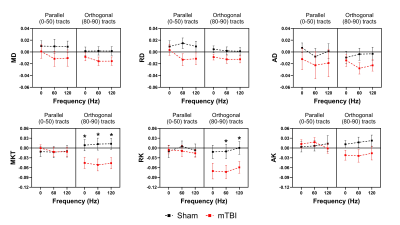 |
Screen Number: 4
0696. Frequency-dependent
diffusional kurtosis is sensitive to white matter damage
following rotational mild TBI
J. Hamilton, A. Eed, K. Xu, R. Menon, A. Brown, C. Baron
Western University, London, Canada
Impact: Our results demonstrate that white matter
microstructural changes are dependent on mTBI kinematics and
thus impact dynamics should be considered when interpreting
mTBI studies. Advanced dMRI improves microstructural
specificity, which is particularly important when examining
conditions with co-occurring microstructural changes.
|
| 15:53 |
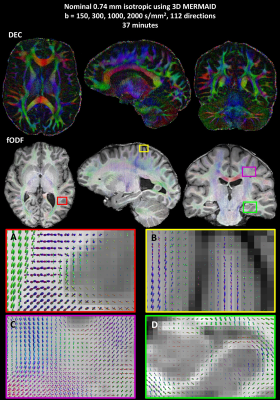 |
Screen Number: 5
0697. 3D
MERMAID: 3D Multishot Enhanced Recovery Motion Artifact
Insensitive Diffusion sequence for sub-millimeter SNR efficient
diffusion imaging
S. Feizollah, C. Tardif
McGill University, Montreal, Canada
Impact: We designed a multi-shot 3D diffusion sequence
that is SNR efficient and robust to motion artifacts between
shots. This sequence enables high spatial and angular
resolution diffusion-weighted imaging of the whole brain in
short scan times on clinical 3T systems.
|
| 15:55 |
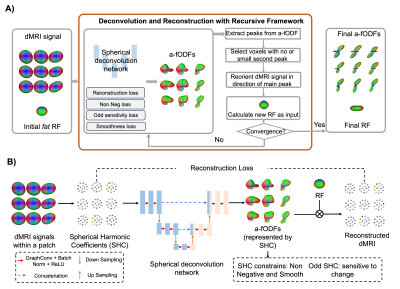 |
Screen Number: 6
0698. Asymmetric
Fiber Orientation Distribution Estimation and Response Function
Calibration with an Unsupervised Deconvolution Network
D. Zhang, H. Fang, Y. Liu, F. Zong
Beijing University of Posts and Telecommunications, Beijing, China
Impact: Our method conducts the unsupervised estimation
of a-fODFs and RF without the histological data. Compared
with symmetric fODFs, the a-fODFs capture complex fiber
patterns, providing a broader perspective for downstream
tractography and white matter microstructure analysis.
|
| 15:57 |
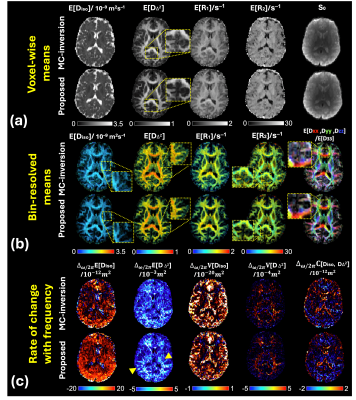 |
Screen Number: 7
0699. Enhancing
stability and speed in multidimensional MRI processing: a
kernel-driven signal dictionary with pattern matching approach

J. S. Park, D. Benjamini
Multiscale Imaging and Integrative Biophysics Unit,National Institute on Aging,NIH, Baltimore, United States
Impact: We introduce a novel parameter estimation
framework that reduces computational time by up to 12 times
while preserving parameter map quality, allowing for
efficient processing of large data in clinical settings.
|
| 15:59 |
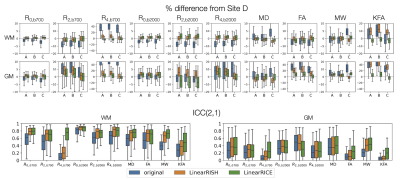 |
Screen Number: 8
0700. Diffusion
MRI harmonization by Linear scaling of Rotational Invariants of
the Cumulant Expansion (LinearRICE): a multi-vendor multi-site
study
K. Kamiya, R. Kurokawa, Y. Suzuki, S. Koike, N. Okada, Y.
Hirano, J. Hirano, M. Hori, T. Hayashi, O. Abe
Toho University, Tokyo, Japan
Impact: We proposed a new method for retrospective
harmonization of DKI-type diffusion MRI data. The proposed
method outperformed the current state-of-the-art technique
in a multi-vendor traveling subject dataset and can be
useful for multi-institutional studies.
|
| 16:01 |
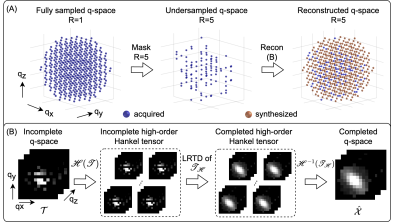 |
Screen Number: 9
0701. Highly
accelerated Diffusion Spectrum Imaging (DSI) by leveraging
low-rank Tensor Completion
C. Licht, S. Baete, C. Obinwa, F. Boada
Stanford University, Stanford, United States
Impact: The proposed reconstruction framework allows for
higher acceleration factors to further enhance Diffusion
Spectrum Imaging (DSI). Thanks to the reduced scan time, DSI
could be frequently used in clinical protocols to obtain
detailed anatomical information about fiber microstructure.
|
| 16:03 |
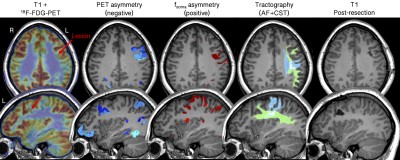 |
Screen Number: 10
0702. Microstructural
characterisation of focal cortical dysplasia in paediatric
epilepsy patients using clinical MRI
S. Genc, E. Macdonald-Laurs, M. Kean, J. Yang
The Royal Children's Hospital, Parkville, Australia
Impact: Our findings highlight the utility of a new
imaging marker, the apparent soma radius, in characterising
FCD. By combining this measure into clinical work-ups we can
increase confidence in radiological diagnoses of subtle FCDs
and in turn assess surgical candidacy.
|
| 16:05 |
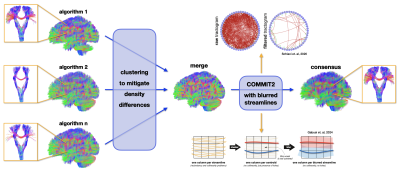 |
Screen Number: 11
0703. Consensus
tractography: decreasing algorithm dependency to improve fiber
reconstructions
I. Gabusi, G. Biolo, M. Battocchio, A. Daducci
University of Verona, Verona, Italy
Impact:
We addressed the well-known algorithm dependency of tractography reconstructions and proposed a consensus-based strategy. Our solution provides clearer and more accurate white matter mapping, showing significant potential to facilitate precise findings and better support clinical applications. |
| 16:07 |
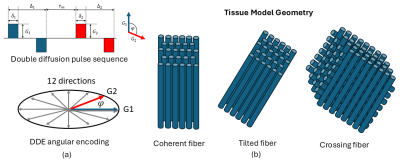 |
Screen Number: 12
0704. Monte
Carlo Simulation of Multiparameter Effects in Double Diffusion
Encoding MRI

R. Trinate, D. Berry, J-P Galons, V. Galinsky, L. Frank,
E. Hutchinson
The University of Arizona, Tucson, United States
Impact: Monte Carlo simulations demonstrate a promising
method for studying the effects of parameters in DDE, aiding
in the optimization of pulse sequences to obtain specific
microstructural information and facilitating the translation
to MRI scanners.
|
| 16:09 |
 |
Screen Number: 13
0705. Diffusion
MRI of organoids at 28.2T with 3T/m gradient strength
C. Tax, T. Nikolaeva, C. Jakobs, R. Singer, J. Pasterkamp,
J. Krug
University Medical Center Utrecht, Utrecht, Netherlands
Impact: Ultra-high field MRI organoids can provide a
complementary platform to human and animal imaging for
validation and design of quantitative MRI. Furthermore, dMRI
of organoids adds a complementary non-invasive organoid
assessment method to optical and electron microscopy.
|
| 16:11 |
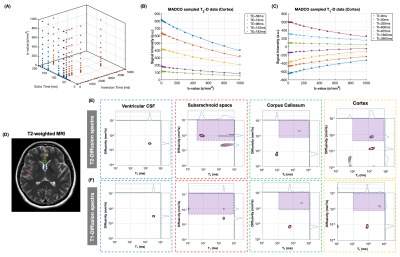 |
Screen Number: 14
0706. Evidence
of Incoherent Fluids Flow in the Human Brain from
Multidimensional Intravoxel Incoherent Motion MRI

C. Li, Y. Ge, J. Zhang
New York University Grossman School of Medicine, New York, United States
Impact: This multidimensional MRI approach reveals
multiple pseudo diffusion components in the living human
brain beyond traditional IVIM measurements, providing a
novel framework to characterize distinct fluid dynamics and
potentially advance our understanding of brain fluid
transport systems.
|
| 16:13 |
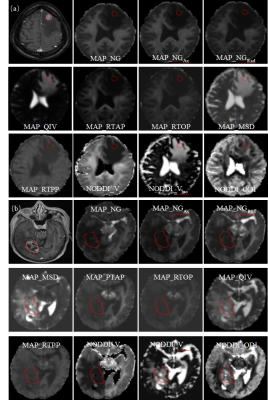 |
Screen Number: 15
0707. Mean
apparent propagator and neurite orientation dispersion and
density imaging in distinguishing glioblastomas from solitary
brain metastase
L. He, M. Chen, Y. Xu, Q. Zhang, X. Xu
Affiliated Hospital of North Sichuan Medical College, Nanchong, China
Impact: MAP-MRI and NODDI offer diagnostic value in
distinguishing GBMs from SBMs, with NODDI_ODI emerging as an
effective imaging marker. Combined models show promise as
sensitive biomarkers in neuro-oncology, potentially
enhancing treatment strategies for GBMs and SBMs.
|
| 16:15 |
 |
Screen Number: 16
0708. MAP-MRI
revisited: Shorter acquisitions, fast propagator anisotropy
estimation, new contrasts
D. Boito, A. V. Avram, M. Herberthson, P. J. Basser, E.
Özarslan
Spin Nord AB, Linköping, Sweden
Impact: This work shows that sophisticated
postprocessing reduces the number of diffusion encodings
needed for MAP-MRI. Together with the proposed novel
contrasts, these advances should facilitate neuroimaging
studies employing MAP-MRI and possibly enable new clinical
applications.
|
| 16:17 |
 |
Screen Number: 17
0709. Revisiting
the ALPS index: Structural Bias on the Glymphatic Interpretation
as revealed by post-mortem AD brains
S. Li, R. Chen, Z. Cao, Y. Ma, Q. Zhu, K. Zhu, Y. Huang, Y.
Shen, Y. Shen, Z. Zhao, Z. Lin, D. Wu
Zhejiang University, Hangzhou, China
Impact: The study explored ALPS in post-mortem AD
brains from the perspective of structural bias. The
underlying mechanism of ALPS alternation, whether the
structure or physiology matters, should be interpreted
cautiously. This study provides post-mortem and in-vivo insights
into the problem.
|
| 16:19 |
 |
Screen Number: 18
0710. Large
axon diffusion MRI modelling in the sciatic nerve in vivo
R. Boonsuth, F. Grussu, A. Passalis, M. Battiston, C. A. M.
Gandini Wheeler-Kingshott, M. C. Yiannakas
NMR Research Unit, Queen Square MS Centre, Department of Neuroinflammation, UCL Queen Square Institute of Neurology, University College London, London, United Kingdom
Impact: We demonstrate that diffusion MRI can accurately
resolve axon diameter information in the sciatic nerve in
vivo using Two-Axon Population (TAP) and Gamma Distribution
Axon Population (GDAP) imaging. These methods provide higher
intra-axonal signal fraction estimates than the
Ball-and-Stick model
|
| 16:21 |
 |
Screen Number: 19
0711. Eddeep:
Fast eddy-current distortion correction for diffusion MRI with
deep learning
A. Legouhy, R. Callaghan, W. Stee, P. Peigneux, H.
Azadbakht, H. Zhang
University College London, London, United Kingdom
Impact: Together with recently developed deep-learning
susceptibility-induced distortion correction techniques,
this work paves the way for real-time preprocessing of dMRI,
facilitating its wider uptake in the clinic.
|
| 16:23 |
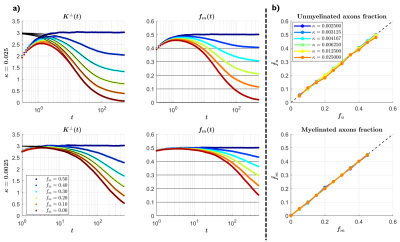 |
Screen Number: 20
0712. Quantifying
unmyelinated axons from time-dependent radial kurtosis in brain
white matter
R. Coronado-Leija, D. Novikov, E. Fieremans
New York University Grossman School of Medicine, New York, United States
Impact:
Unmyelinated axon density changes in development, aging, and neurodegenerative diseases such as multiple sclerosis. Estimation of the unmyelinated axon fraction from time dependent kurtosis could lead to new biomarkers for diagnosis and prognosis, as well as to assess remyelination. |
| 16:25 |
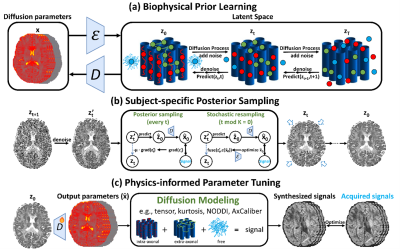 |
Screen Number: 21
0713. DIMOND++:
Improving diffusion model optimization using diffusion priors

Z. Li, J. Zheng, Z. Li, Z. Wang, M. Liu, G. Ning, H.
Liao, Q. Tian
Tsinghua University, Beijing, China
Impact: DIMOND++ has a high potential to transform
diffusion model fitting. Its superior generalization
capability and the ability to be deployed directly on any
dataset will greatly enhance the clinical and
neuroscientific applicability of diffusion MRI based
microstructure and connectivity mapping.
|
| 16:27 |
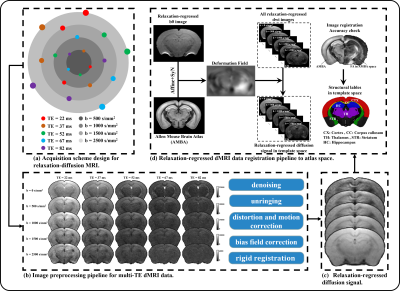 |
Screen Number: 22
0714. Neurite
Microstructure Characterization in the Mouse Brain Using
Relaxation-Diffusion MRI

B. Ren, Y. Wu, Q. Tao, Y. Feng, X. Zhang
School of Biomedical Engineering, Southern Medical University, Guangzhou, China
Impact: This study demonstrated the feasibility of using
rdMRI to observe brain microstructural changes during
development, potentially offering diagnostic markers for
age-related diseases.
|
| 16:29 |
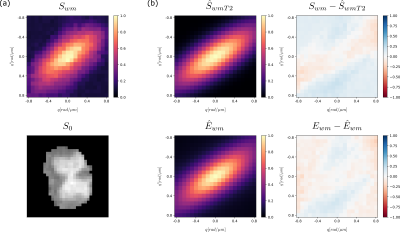 |
Screen Number: 23
0715. Studying
the effects of relaxation on estimates of white-matter
microstructure with diffusion encoded measurements
A. Ordinola, M. Herberthson, E. Özarslan
Linköping University, Linköping, Sweden
Impact:
The implemented framework shows that relaxation effects greatly impact estimated micro-structure parameters in tissue, even if they are normalized by non diffusion-weighted data. Moreover, the implemented model can be employed to assess biases in previously presented frameworks |
| 16:31 |
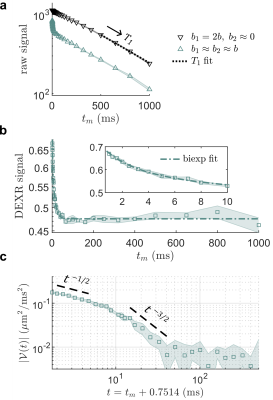 |
Screen Number: 24
0716. A
new approach to time-dependent diffusion: Direct, time-domain
measurement of the velocity autocorrelation function
T. Cai, N. Williamson, R. Ravin, M. Herbethson, E. Özarslan,
P. Basser
National Institutes of Health, Bethesda, United States
Impact: Time-dependent diffusion encapsulates diffusion
microstructural MRI. The conventional oscillating gradient
approach, however, is limited by slew rates and relaxation.
We propose a new approach that is semi-quantitative and can
access a wide range of times using a longitudinal storage
period.
|
| 16:33 |
 |
Screen Number: 25
0717. Micron-resolution
fiber mapping in brain histology independent of sample
preparation
M. Georgiadis, F. auf der Heiden, H. Abbasi, L. Ettema, J.
Nirschl, H. Moein Taghavi, M. Wakatsuki, A. Liu, W. Ho, M.
Carlson, M. Doukas, S. Koppes, S. Keereweer, R. Sobel, K.
Setsompop, C. Liao, K. Amunts, M. Axer, M. Zeineh, M. Menzel
Stanford University School of Medicine, Stanford, United States
Impact: Using scattered light, we generate micrometer
maps of brain fiber orientations in animal and human
histology sections, and compare to diffusion MRI. This
enables time- and cost-effective studies of brain
micro-architecture on new and archived sections from any
sample preparation.
|
The International Society for Magnetic Resonance in Medicine is accredited by the Accreditation Council for Continuing Medical Education to provide continuing medical education for physicians.